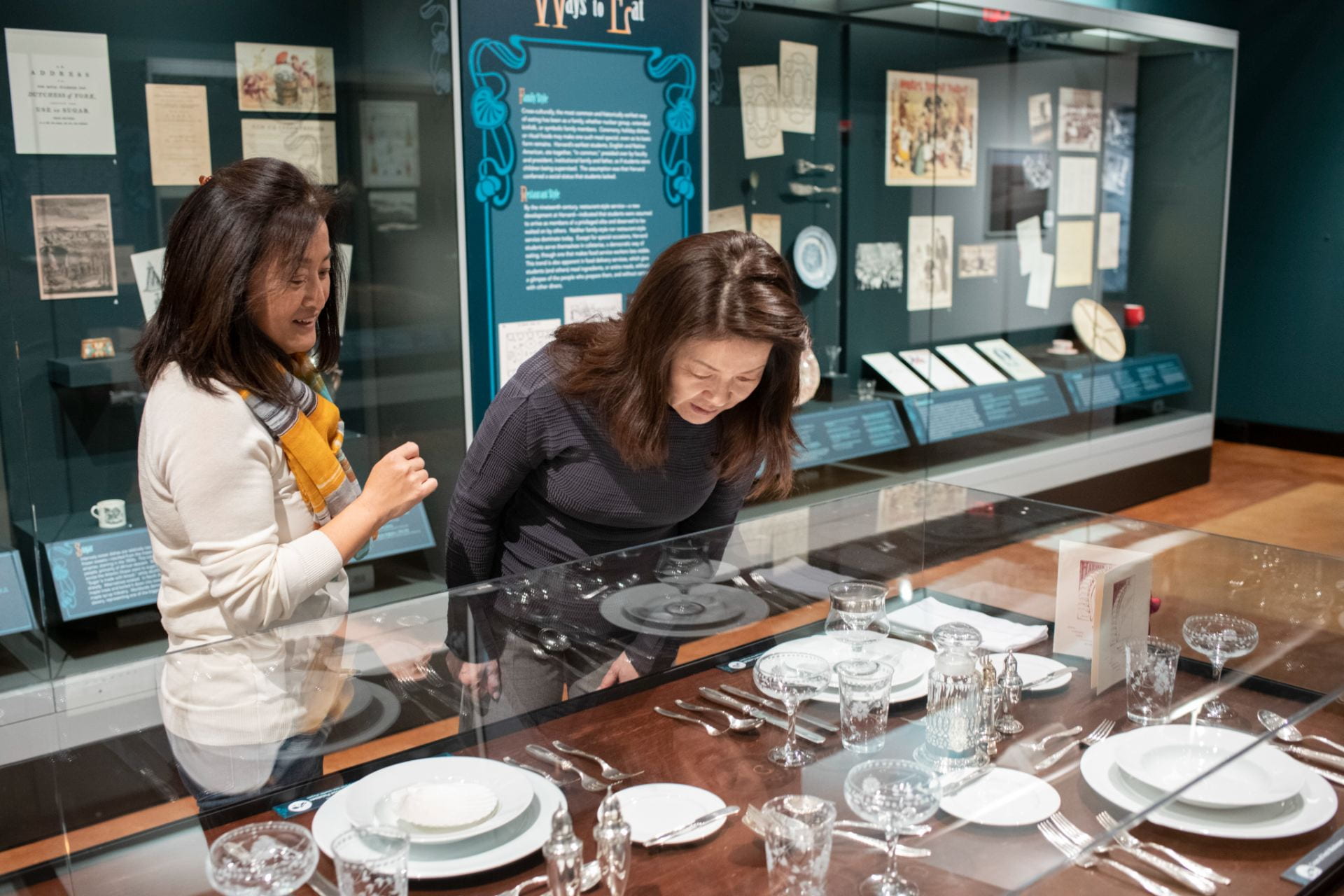(Cambridge, MA) An interdisciplinary collaboration at Harvard University has created a full-scale reproduction of an ancient Egyptian throne belonging to Queen Hetepheres (about 2550 BC). Created by Giza Project staff members Rus Gant, David Hopkins and partners, the chair’s materials are based on the ancient original: cedar, bright blue faience tiles, gold foil, gesso, cordage seating, and copper. This experiment in archaeological visualization is a triumph of reconstruction because the only guidance came from thousands of tiny, jumbled fragments and 90-year old expedition records.
The reproduction chair is the centerpiece of the new exhibit, Recreating the Throne of Egyptian Queen Hetepheres. The exhibit will open to the public at the Harvard Semitic Museum on Thursday, February 11 at 10:00 AM and will remain on view indefinitely. The new Egyptian exhibit is part of the Harvard Semitic Museum’s larger efforts at renovation and revitalization, blending ancient artifacts with modern technologies to support research, teaching, and preservation of the many cultures of the ancient Near East. 2
In 1925, the Harvard University–Boston Museum of Fine Arts Expedition discovered a small, unfinished chamber almost 100 feet underground at the famous site of Giza. It contained the deteriorated burial equipment, sarcophagus, and other objects belonging to Queen Hetepheres, mother of King Khufu, the pharaoh who built the Great Pyramid nearby. In the 1930s, conservators restored and reconstructed some of the furniture, but until today, the queen’s elaborate chair existed only on paper.
The Giza Project team created a 3D digital model of the tomb and its contents, and then used a computer-controlled, five-axis milling machine, plus lots of human labor, to fabricate the chair. The goal of this new museum display object and research/teaching tool was to reconstruct the chair’s iconography and to document the ancient workflow that the Egyptians used to construct such a masterpiece from the Pyramid Age.
The Hetepheres chair project was supported by generous grants from Harvard’s Arts and Humanities Fund, the Anne and Jim Rothenberg Fund, and by contributions in equipment, services, and expertise from the Museum of Fine Arts, Boston, the Egyptian Museum, Cairo, ShopBot Tools, Inc., Epner Technology, the Center for Bits and Atoms at MIT, Dassault Systèmes, and the Ceramics Program of the Office for the Arts at Harvard.
The Giza Project, a non-profit international initiative based at Harvard University, assembles information about all the archaeological activity at the most famous site in the world: the Giza Pyramids and surrounding cemeteries and settlements (3rd millennium 3 BCE to present). Using digital archaeology, the Project unites diverse documentation to produce powerful online and traditional academic research tools and new teaching technologies. It presents academic information about Giza at all levels of expertise for the world community and strives to provide a model of archaeological information management.
Founded in 1889, the Harvard Semitic Museum houses more than 40,000 Near Eastern artifacts, mostly from museum-sponsored excavations in Egypt, Iraq, Israel, Jordan, Syria, and Tunisia. The museum’s galleries span 3 floors. The collections are used to investigate and teach Near Eastern archaeology, history, and culture. The Harvard Semitic Museum is one of the Harvard Museums of Science & Culture (HMSC). It is located at 6 Divinity Avenue, Cambridge, on the Harvard campus, a 7-minute walk from the Harvard Square Red Line MBTA station. The museum is wheelchair accessible. The museum is open Monday–Friday, 10am – 4pm, and Sundays, 1pm – 4pm (closed Saturdays). Admission is free. For directions, exhibition schedules, lectures, and information on parking, see the websites http://semiticmuseum.fas.harvard.edu and https://hmsc.harvard.edu.
High resolution images available on request.
Media Contact:
Faith Sutter
Harvard Museums of Science & Culture
617-495-3397
